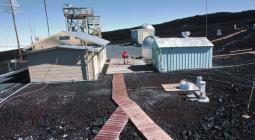Analysts point to green recovery as route to ‘Shovel-worthy decade”.

From prominent international economists to an (almost as prominent?) Canadian think tank, there’s a widening consensus that green investment in projects that are “shovel-worthy” as well as “shovel-ready” will be the best way to restore economies ravaged by the coronavirus lockdown while simultaneously addressing the climate crisis.
This week, a team of U.S. and British economists that included Columbia University Nobel laureate Joseph Stiglitz and veteran UK climate analyst Lord Nicholas Stern called for measures “both to revive virus-hit economies and strike a decisive blow against climate change,” Reuters reports. And in an opinion piece for The Hill Times, Dan Woynillowicz and Sarah Petrevan of Clean Energy Canada suggest criteria for economic recovery projects that will perform better than the ones the country funded in 2009. “Shovel-ready is well and good, but we have a chance now to build a shovel-worthy decade,” they write.
The international study led by Oxford University environmental economist Cameron Hepburn noted that policy decisions over the next six months will determine whether the pandemic becomes a turning point on climate. “With major economies drawing up enormous economic packages to cushion the shock of the coronavirus pandemic, many investors, politicians, and businesses see a unique opportunity to drive a shift to a low-carbon future,” Reuters says. “Think tanks and investor groups have also been making the case for tailoring recoveries to accelerate a transition away from fossil fuels.”
Based on a review of 700 economic stimulus packages from the last economic crash in 2008 and a survey of 231 experts from 53 countries, the study “suggested that green projects such as boosting renewable energy or energy efficiency create more jobs, deliver higher short-term returns, and lead to increased long-term cost savings relative to traditional stimulus measures,” the news agency adds.
“The authors cautioned that there were some risks with extrapolating from past crises to discern how coronavirus recovery packages might play out, given the possible reluctance of people to travel or socialize following the pandemic.” But “with carbon emissions on track for their biggest fall on record this year, governments could now choose to either pursue net zero emissions targets or lock in a fossil fuel system that would be ‘nearly impossible to escape’.”
“The COVID-19-initiated emissions reduction could be short-lived,” said Hepburn, director of Oxford’s Smith School of Enterprise and Environment. “But this report shows we can choose to build back better, keeping many of the recent improvements we’ve seen in cleaner air, returning nature, and reduced greenhouse gas emissions.”
In Canada, Woynillowicz and Petrevan contrast Canada’s economic stimulus philosophy from a decade ago—“if it’s ready to go and creates some jobs, write a cheque”—with a U.S. recovery plan that devoted US$112 billion, about one-eighth of all funding, to clean energy investment.
“Not only did it leverage about $150 billion in private capital, it also created a significant number of jobs in the energy efficiency and renewable energy industries in a short period of time,” they write. “The clean energy-related programs supported 900,000 job-years from 2009 to 2015, including new employment for workers from sectors that saw big job losses. Building retrofits and solar panel installation programs re-employed construction workers laid off during the housing crash.”
The U.S. investments “also paid off in reduced carbon pollution,” they add. “Since 2008, U.S. wind generation has tripled, while solar generation has increased more than 80 times. This year, renewable energy will account for 21% of total electricity used in the U.S, contributing to a 28% fall in electricity-related carbon pollution since 2005.”
To gain from that experience, Woynillowicz and Petrevan suggest a set of criteria to help Canadian officials conduct quick but robust assessments of the avalanche of stimulus projects coming forward for funding:
- The number of jobs they create per dollar invested, and whether they’re “secure jobs in sunrise industries”;
- The long-term economic impact of projects that boost Canadian innovation and competitiveness, drive domestic supply chains, and mobilize private investment;
- Whether a project encourages cleaner energy and energy efficiency, and supports the country’s climate targets.
“Government frameworks and datasets already exist to help answer these types of questions, though they are scattered across departments,” they write. “A concise tool that pulls them together could quickly give us the lens through which we might see a better Canada.”
6 May 2020
The Energy Mix





